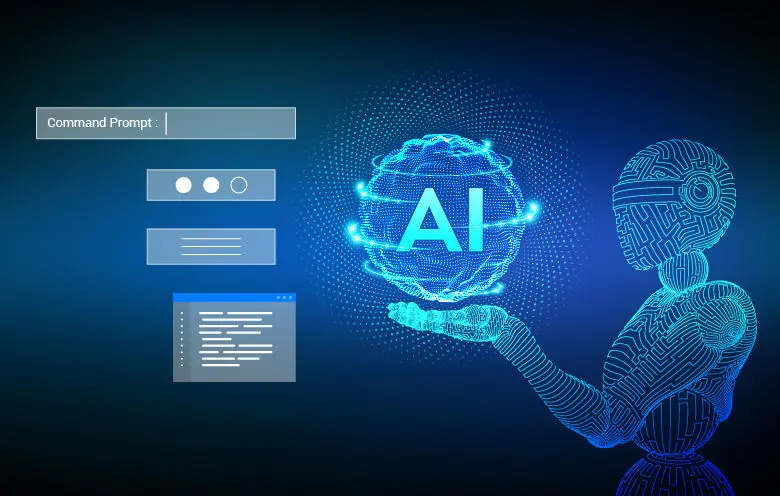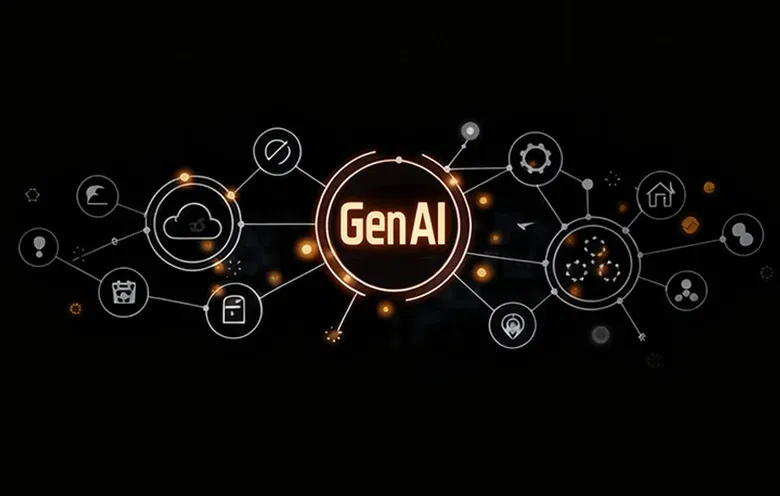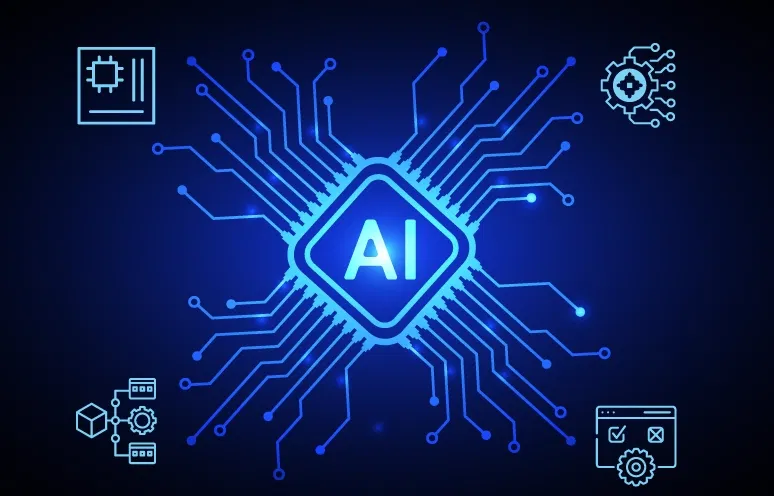The enterprises seeing real value from generative AI are the ones that not only chose the right models, but also approached integration as a deliberate business decision. From accelerating decision-making to supporting knowledge-heavy work, leaders are no longer asking whether generative AI belongs in the enterprise, but how it should be embedded to deliver consistent value across teams. The conversation has shifted from experimentation to execution, where integration determines whether AI becomes a daily advantage or remains isolated.
By 2028, more than 95 percent of enterprises will have used generative AI APIs or models, or deployed GenAI-enabled applications in production environments.
– Gartner
This level of adoption highlights a clear opportunity. As generative AI enters production environments, enterprises that integrate it into existing systems are better positioned to achieve measurable outcomes. A structured generative AI integration strategy aligns data, workflows, security, and governance, so adoption leads to measurable outcomes.
In this blog, we explain what generative AI integration means, how enterprises can build a scalable integration roadmap, and how the right architecture and use cases help turn GenAI into real business impact.
What is generative AI integration?
Generative AI integration is the process of embedding generative AI models into an enterprise’s existing systems so they operate as part of everyday business workflows. Integrated GenAI operates alongside core platforms such as CRM, ERP, and enterprise data systems, becoming part of everyday workflows.
A generative AI model on its own can produce text or insights, but it lacks business context without access to enterprise data and processes. Integration connects these models to trusted data sources, operational triggers, and defined workflows, ensuring outputs reflect real business conditions and requirements.
When generative AI models are embedded into systems and governed centrally, usage becomes consistent and measurable. Outputs surface directly inside the tools teams already use, while access controls, monitoring, and updates are managed at the platform level. The result is a scalable capability that supports decision-making and productivity across the organization without creating fragmented workflows.
Why are enterprises prioritizing generative AI integration now?
Enterprise adoption of generative AI has accelerated beyond experimentation. Leaders are increasingly treating GenAI as a productivity and decision-support capability that must deliver measurable results. As usage expands, the focus has shifted toward making AI reliable, accountable, and embedded into how the business actually operates.
This shift is reflected in findings from a 2025 research study by Wharton:
Source: Wharton Human-AI Research, 2025
In most enterprises, GenAI rarely stays in one corner of the business. Different teams start using it for their own work, with their own tools and data access. When those efforts are not connected through shared systems and governed data, usage spreads unevenly, the same work gets rebuilt in multiple places, and outcomes differ by team. A common integration layer allows GenAI to scale across teams with consistency and control.
Integration enables enterprises to meet executive expectations around governance, security, and enterprise alignment. By embedding GenAI into existing platforms and operating models, organizations can convert rapid adoption into sustained business value.
What technologies and architecture are required for generative AI integration?
A GenAI integration architecture explains how generative AI fits into enterprise operations once it moves beyond experimentation. It clarifies how data access, model usage, workflow logic, and governance are organized so AI can be used reliably at scale, without becoming fragmented or difficult to control.
To understand how generative AI operates inside an enterprise, it helps to look at the core layers that work together behind the scenes.
Enterprise data foundation
The data foundation connects generative AI models to enterprise information such as operational records, documents, and internal knowledge. Access to permissioned and up-to-date data allows models to respond with context that reflects how the business actually operates, while staying within compliance boundaries.
Generative AI models
Generative AI models handle response generation, summarization, and reasoning inside your applications. In enterprise environments, you control access through defined interfaces, so your teams can manage updates and monitor performance without disrupting daily operations.
Orchestration and workflow logic
This layer determines how and when generative AI is applied. It manages prompts, decision logic, and triggers that connect AI activity to real business events, while enabling human oversight where approvals or escalation are required.
Business applications and user interfaces
Value becomes visible when GenAI capabilities surface directly inside the applications teams already use, such as CRM systems, analytics dashboards, or internal tools. Users interact with AI outputs in context, without switching platforms.
Security and governance controls
Governance applies across every layer, setting rules for access, monitoring usage, and maintaining audit trails. This ensures generative AI remains aligned with enterprise policies as adoption grows.
Together, these layers describe how generative AI can function as part of normal operations, rather than as a set of isolated tools introduced by individual teams.
Step-by-step generative AI integration roadmap for enterprises
A successful generative AI integration roadmap starts with business intent and progresses toward scalable execution. Each step builds on the previous one, reducing risk while increasing confidence and impact.
1. Define business objectives and success measures
Begin by identifying where generative AI should create value in the flow of daily work. Quantify success metrics before evaluating any solution. A clear GenAI integration strategy begins with questions like: Which workflows consume the most manual effort? Where do delays cost us revenue? What decisions would improve with better data synthesis?
2. Select use cases that fit enterprise workflows
Start with use cases closest to your existing processes. You’re more likely to see early wins in areas like CRM management, finance operations, knowledge management, or reporting because they’re easier to integrate and measure. In the first phase, focus on workflow-aligned scenarios so you can shorten time to value and build momentum internally.
3. Prepare data and access foundations
Assess whether the required data is available, trusted, and governed. Integration depends on connecting generative AI to permissioned enterprise data, not just model capability. Address data access, quality, and ownership before moving into production design.
4. Design integration and governance upfront
Plan how generative AI will interact with systems, users, and controls. Define where AI outputs appear, how actions are triggered, and how usage is monitored. Governance decisions at this stage prevent security gaps and inconsistent behavior later.
5. Integrate, test, and refine within real workflows
Embed generative AI into existing platforms and run controlled pilots inside live workflows. Observe how outputs are used, where human review is required, and what needs adjustment. Feedback from this phase guides refinement before wider rollout.
6. Scale with consistency and operational oversight
Once value is proven, extend integration across teams using shared architecture and standards. Centralized monitoring, updates, and governance allow generative AI to scale without creating fragmented implementations.
Which enterprise use cases deliver faster ROI with generative AI integration?
Faster ROI from generative AI comes when it is embedded into existing enterprise systems, not introduced as a parallel layer. Integration allows AI outputs to stay grounded in live data, governed by business rules, and applied directly inside operational workflows.
AI agents for customer support integrated with CRM
When AI agents are integrated into CRM systems, they respond using live customer data, case history, and policy context. This shortens resolution time while keeping responses consistent, auditable, and aligned with service standards.
Sales and marketing content automation within enterprise tools
Integrated GenAI supports sales and marketing teams by generating drafts, summaries, and follow-ups inside CRM and marketing platforms. Content stays aligned with account data and campaign context, reducing manual effort without breaking existing approval flows.
Supply chain forecasting and procurement intelligence
Generative AI embedded into planning and procurement systems helps teams interpret forecasts, supplier signals, and demand changes together. Integration allows insights to surface where decisions are made, improving responsiveness without introducing parallel analytics tools.
HR and talent management with AI decision support
When GenAI is connected to HR systems, it assists with role matching, policy interpretation, and workforce analysis using governed employee data. Decision support improves speed and consistency while keeping sensitive information protected.
Financial reporting automation with secure LLMs
Integrated GenAI supports financial teams by summarizing reports, validating narratives, and answering queries within reporting systems. Secure access and governance ensure accuracy and compliance while reducing the time spent on manual preparation.
What business outcomes do enterprises achieve with generative AI integration?
When generative AI is embedded into enterprise systems, its impact shows up in routine work rather than strategy documents. Teams begin to notice changes in how quickly work moves, how often effort is repeated, and how decisions are prepared.
Faster workflow and decision cycle times
Integrated GenAI reduces the time spent drafting, reviewing, summarizing, and responding across functions. Customer interactions close faster, reports move quicker through approval, and decisions reach execution sooner because AI operates inside existing workflows.
Lower operational effort and cost
Integrated GenAI reduces the manual effort involved in repetitive knowledge work that sits inside core systems. As fewer steps require manual handoffs or rework, operating costs come down gradually through smoother execution.
Improved decision quality
Access to enterprise data allows GenAI to surface information that reflects current business conditions. Teams reviewing financials, supply signals, or operational data see clearer context before decisions are made.
Higher employee productivity
Routine preparation work takes less time when GenAI is available inside daily tools. Employees spend more of their effort applying judgment and experience rather than assembling inputs.
How can generative AI be integrated into existing systems without disruption?
Effective integration builds on what already works. In most enterprises, generative AI is introduced to enhance existing ERP, CRM, and data platforms, not to compete with them. Low-disruption deployments usually follow a small set of practical integration patterns.
API-first connectivity
Many teams start by connecting generative AI through APIs that sit alongside existing applications. Core systems continue to operate as usual, while AI services handle specific tasks such as summarization or response drafting through defined interfaces.
Independent service layers
AI functionality is often deployed outside core platforms through lightweight services. Keeping prompt logic, data access, and response handling separate makes it easier to update models or rules without affecting system stability.
Incremental rollout across workflows
Integration typically begins with a limited workflow rather than a broad rollout. Expanding usage gradually across teams allows organizations to observe behavior, address gaps, and avoid disruption to ongoing operations.
Validation within live systems
Testing integrations inside real tools reveals how AI behaves with actual data and users. Small pilot groups surface performance issues and workflow friction early, when adjustments are still inexpensive.
In many cases, generative AI implementation services support this approach by bringing experience with integration patterns, architecture design, and rollout planning. The focus remains on adding capability without interrupting how the business already runs.
Discover what generative AI integration looks like in your environment
Most enterprises already have the foundations to integrate generative AI effectively. What’s often missing is alignment on how decisions around data, systems, and governance are sequenced. Architecture constraints, data access, workflow dependencies, and governance expectations shape outcomes well before AI becomes part of day-to-day operations.
What makes the difference is how those decisions are approached. When priorities are clear and assumptions are tested against real workflows, momentum builds with far less friction. For teams exploring generative AI integration, this clarity often determines whether progress accelerates or slows under complexity.
The roadmap is in place. What matters now is moving forward with clarity.
FAQs
Can generative AI improve customer support and CRM workflows?
Yes, generative AI integration can improve customer support and CRM workflows by embedding AI directly into CRM systems. It uses customer data, case history, and context to assist responses and summaries. This reduces resolution time and keeps service interactions consistent and auditable.
How does generative AI help in sales, marketing, and content automation?
Generative AI integration helps sales and marketing teams automate content creation inside enterprise tools. It supports drafting emails, proposals, summaries, and campaign content using account and campaign data. This reduces manual effort while keeping content aligned with approval workflows.
Is it safe to use generative AI for financial reporting and HR decision support?
Generative AI integration can be safe for financial reporting and HR decision support when used with secure access and governance. It operates on permissioned data and follows audit and compliance controls. This allows teams to automate summaries and analysis without exposing sensitive information.
What steps should an enterprise take for a successful generative AI integration roadmap?
The steps an enterprise should take for a successful generative AI integration roadmap start with defining business objectives and success metrics. They include selecting workflow-aligned use cases and preparing data foundations. Integration design, governance planning, and phased rollout follow to support scalable adoption.
What technologies and architecture are required for generative AI integration?
Generative AI integration architecture includes an enterprise data foundation, AI models, orchestration logic, and application interfaces. Governance and security controls span all layers. Together, these technologies allow generative AI to operate reliably inside existing systems.






